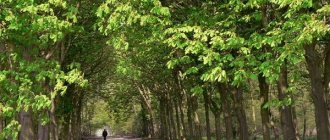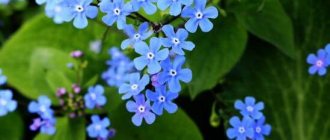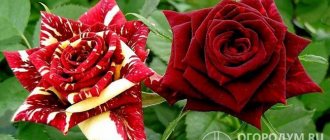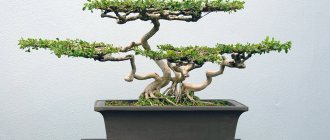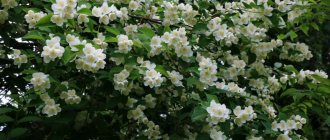Story
The original idea to create a Japanese bonsai tree belongs to China. It was there that the unusual art of “Penjing” was born. There is a long-standing legend that a certain ruler wanted a small empire that would have trees, mountains, and rivers. When the subordinates began to carry out the order, they liked the potted trees so much that they decided to create copies and keep them.
It is not known for certain whether this is true or not, but there are obvious facts: Buddhist monks were the first to use the home bonsai tree. Later they were used during ceremonies.
Garden bonsai: Japanese motifs in the Central Russian garden
The ancient art of growing dwarf trees in pots has spread throughout the world, turning from a pastime of the Japanese aristocracy into a mass hobby.
Over many centuries, the Japanese have learned to form miniature copies of trees growing in natural conditions. In Japan, this art has reached enormous development and today represents a whole science with numerous schools and shaping techniques that make it possible to obtain plants of various configurations: straight, asymmetrical, oblique, “bent by the wind,” “weeping,” cascading and others. These forms are inspired by the very nature of Japan, where in a special climate plants acquire harmonious, perfect silhouettes. Bonsai - an ancient art of Japan
Recently, Russian gardeners are increasingly using oriental styles in design, and creating bonsai in the open ground is undoubtedly a fashionable and promising trend. The formation of a garden bonsai differs little from the traditional one, however, familiar techniques for working with woody plants are used: pruning, pinching and grafting.
The sizes of garden bonsai, unlike the canonical Japanese ones, are arbitrary. The starting material can be an old fruit tree, an unsightly twisted bush in the corner of the garden, an unusual specimen found in nature and, of course, a young plant. Take a closer look at the plants in your garden, maybe some of them are already ready to be made into a bonsai?
Garden bonsai, unlike canonical ones, can have arbitrary sizes. Photo by the author
It happens that within just a few years of targeted pruning, a nondescript tree with bare trunks and twigs sticking out in all directions can be transformed into attractive, unusual oriental-style trees.
Many people probably have old apple or cherry trees , which have not yielded good results for a long time and look sloppy. Try to remove all the small branches on the lower part of the crown so that the main trunk is clearly visible, and in the spring trim the top of the crown parallel to the ground. By repeating these steps annually, you will form dense caps of foliage in the upper part of the crown on a graceful curving trunk. Soon you will see how the silhouette of the tree changes, and you will enjoy this completely easy gardening work.
With coniferous plants, the result can be more spectacular, but the formation process is longer. For example, the dense and dense crown of a mountain pine, which has pleased you for many years, begins to become sparse and loose. A great reason to start shaping!
The formation of coniferous plants takes time, but produces impressive results. Photo by the author
Look inside the crown and highlight several branches that form a beautiful silhouette. Cut out the remaining branches without regret, and at the beginning of summer, when the buds begin to grow, pinch them, leaving 1–2 cm. By the next season, many new buds will form in the upper part of the crown, and they will give rise to a new beautiful crown in the form of a cloud.
The same can be done with Scots pine . The only thing is that, along with pinching the shoots and thinning the crown, the branches of Scots pine will have to be fixed in a horizontal position. Typically, thick wire is used, weights are tied, or ropes are pulled. This is necessary to maintain the tiered shape of the crown, otherwise, without fixation, the branches begin to “puff up” and the space between the tiers closes.
When forming the crown, branches sometimes have to be fixed with weights. Photo by the author
I note that of all the conifers, Scots pine and mountain pine are the most suitable material for garden bonsai in the middle zone. There is no need to be afraid to cut out unnecessary branches, because pines are very flexible trees, thanks to their abilities they were able to adapt to the harsh conditions of nature - the drying winds of the highlands and the bitter frosts of the north.
Pines take the desired shape with great pleasure, the main thing is to help them. At the same time, the gardener himself will comprehend harmony and develop taste, bringing the form to perfection. In addition, working with form is a passion for many years, and the result is an exclusive and unusual plant that delights owners and surprises guests.
Pine trees take the desired shape with great pleasure - all you need to do is give them a little help. Photo by the author
In addition to pines, other conifers are also suitable for creating garden bonsai. European larch is very resistant and tolerant of pruning and middle juniper and pea cypress are developing well . You can try to work with varieties of common spruce .
Remember that pines do not know how to bud on the woody shoots of the previous year, so you can only pinch out young candle shoots at the beginning of summer, and junipers, larches, spruce and cypress trees can be cut at any time, even with scissors.
Garden bonsai can be formed not only from pines, but also from other conifers. Photo by the author
Among the deciduous trees suitable for our climate are hawthorns , maples , oak , as well as fruit trees - apple trees , cherries . Despite the small variety, these trees are resistant to our climate and tolerate shaping well.
You can select suitable planting material for your garden experiments in our catalog, where a wide range of products from well-known online stores of planting material and seeds are presented. Choose plants for your garden.
7 COLORS Plant Juniperus virginiana Blue Arrow C7 D25 H125 RUB 2,899
OBI
7 COLORS Plant Juniper medium Old Gold C1 D13 H30 499 RUR
OBI
7 COLORS Seedling Geldreich Pine Malinki C7 H30-40 RUR 4,999
OBI
7 COLORS Seedling Juniper horizontal Andorra Compact C2 H20-25 RUR 749
OBI
Recently, ready-made bonsai, grown in a nursery and suitable for planting in open ground, have appeared on sale.
These are usually multi-trunked versions of Scots or mountain pine that have dense green caps of needles formed. Such plants, as a rule, are very expensive and do not always look harmonious, so they can be considered as material for creating a more perfect tree, from the owner’s point of view. In any case, after planting, you will have to care for them, continuing the work begun in the nursery - annually pinch the shoots and cut out excess branches, otherwise your bonsai will turn into an ordinary tree. If you know the grafting technique, then the process of creating a bonsai can be somewhat speeded up: graft several cuttings of a dwarf variety onto a tall rootstock (for example, pine), thus creating a multi-tiered plant at once. The advantage of this method is that pinching of shoots will not be required in the future, since the grafted variety is dwarf.
To make your bonsai look harmonious, the right environment is important. Photo by the author
When creating a bonsai, do not forget that this is not only a formed tree, but also its harmonious combination with the surrounding space . Bonsai is a self-sufficient work of art, closely related to the other elements of the composition, as it imitates a piece of nature in miniature.
Agree that your masterpiece will look somewhat ridiculous if there are nettles or beds of strawberries growing around. Therefore, to give an oriental flavor and support the overall style in the garden, trim everything! Favorite shrubs - spirea, barberry, dogwood and even clumps of perennials will be an excellent addition to mature trees if you give them smooth, streamlined outlines with regular pruning.
In addition, plants that are similar in appearance to plants of the Japanese flora will add a zest. For example, instead of mosses, you can grow saxifrage, sedum, azorella, some types of bryozoans, and astilbe will look good in the shade. Strive to make the composition harmonious, and the garden itself will tell you what changes are necessary.
Konstantin Korzhavin
How to identify a tree?
There are several signs:
- Pronounced root system.
- Clear branches, the course of which can be followed.
- The trunk can be seen even through the foliage.
- Similarity to the original tree.
Pots
To grow miniature crops, flat, shallow types of containers are used, which make it possible to restrain excessive growth and carry out the necessary formation of the root system and crown.
Both unglazed and glazed pots with a shiny decorative surface are used. They can be plain, multi-colored or painted. Usually, for traditional compositions, straight containers with sharp corners are selected. If evergreen tree species are grown, then unglazed containers are most suitable. When selecting, they focus on the harmonious combination of shades of plants and the surface of the pot
Rice. 7. Variety of bonsai pots
IMPORTANT!
When purchasing, check for the presence of drainage holes at the bottom of the planting containers, which allow you to get rid of excess moisture flowing into the pan. To prevent soil from spilling out, cover the holes with a plastic or ceramic piece.
They prefer ceramic or clay pots that are quite heavy. They are stable, so they will not tip over under the increasing weight of the tree. This is especially important for cascading forms.
Follow several rules for selecting pots:
- For a miniature plant, which involves the presence of several trunks or is formed with a dense spreading crown, you will need a small wide bowl.
- For tiny trees with numerous aerial roots, select a narrow container.
- A cascading bonsai will require a narrow, fairly deep pot.
On average, it is taken into account that the width of the container should be approximately equal to 2/3 of the total height of the plant. The height of the pot should not be less than the diameter of the trunk.
Symbolism
Previously, it was believed that every person who managed to grow a tree could be considered a god. This is easily explained by their religion: in the Buddhist view, the whole world is an evergreen garden, and God is the gardener.
And of course, you shouldn’t immediately count on success in such a complex matter. Some try to grow it for years, constantly watching and caring for it. It symbolizes:
- Justice.
- Goodwill.
- Wisdom.
- Delicacy.
- Excerpt.
Basically, types of bonsai are distributed according to the seasons in which they bloom: spring, summer, autumn, or having an attractive appearance throughout the year.
Varieties of forms
Over the centuries-old period of creating bonsai, various forms of obtaining unique tiny plants have developed. When growing any tree yourself, you must first decide on the main style directions, which will determine the techniques for forming the crown, as well as the selection of a place to place the green miniature.
Popular bonsai forms:
- Bankan - coils of a snake. It is a small tree whose trunk is curled into a knot.
- Bunjingi is a literary style. The plant is characterized by a straight trunk with a minimal number of branches.
- Ese-ue - group style. The composition is usually made from an odd number of plants. A group of trees of different ages and heights looks original. With this solution, a feeling of the forest arises.
Rice. 2. Implementation of the ese-ue style in bonsai
- Ikadabuki is a raft style. Resembles a tree that fell into a swamp in the form of a raft. The unusual shape of the bonsai is formed due to a recumbent trunk with vertical branches of different lengths.
- Isitsuki - growing on a stone. Illustrates the endurance and good adaptation of trees whose roots are located in rocky crevices.
- Kabudati is a multi-stemmed style. It is a 3-5-trunk tree with a common root system. Over time, the stems acquire different thicknesses.
- Kengai (Kengai) - cascade. It creates the feeling of a miniature plant growing in the mountains or near a pond. The trunk leans strongly to one side, dropping below the soil level in the pot.
Rice. 3. Kengai style in bonsai
- Moyogi is a straightforward, informal style. In the central part, the trunk may have several curvatures, but the crown must be strictly perpendicular to the ground.
- Neagari (Neagari) - root form. This style is used for growing tropical tiny plants. Assumes the appearance of roots above the soil surface.
- Netsunagari. In this type of bonsai, part of the tree trunk is covered with soil or flooded with water. As a result, the branches grow as separate trees.
- Sokan - double barrel. As a result of targeted formation, a crown is formed, based on two trunks, which often have different sizes.
Rice. 4. Sokan style in bonsai
- Sekijoju is a root on a stone. The miniature tree is based on a stone that protrudes above the soil surface. The entire surface of the cobblestone is entwined with roots.
- Shakan - oblique style. The main feature is a straight trunk growing at an angle to the soil. This bonsai symbolizes a strong person who resists the difficulties that arise along the path of life.
- Tekkan (tekkan) is a straight formal style. In a smooth trunk, on which only three skeletal branches are often left, the lower thickened part is exposed, opening a view of the superficial, very powerful root system.
Rice. 5. Tekkan style in bonsai
- Khan-kengap (khan-kengai) - semi-cascade style. The base of the trunk is straight, and the top is inclined so that it is placed at the level of the ground surface in a bowl.
- Hokidachi - broom style. The branches are located on different sides of the straight trunk, forming a spherical crown, occupying approximately 1/3 of the total height on top.
- Sharimiki is dead wood. When forming miniature plants, individual fragments of bark are cut off and the wood is bleached. This method is more often used for junipers.
Rice. 6. Sharimiki style in bonsai
What plants are suitable for growing in our climate?
Many people wonder: how to grow a bonsai tree at home? And there is no definite answer to it. The only thing worth remembering is that this tree cannot be in the room. It is not suitable for home conditions. But outside, with protection from rain and wind, it’s calm. And now you will find out how.
First, you need to decide what kind of bonsai tree seeds you want to grow. Perfect for Russia: juniper, pine, spruce, thuja, lilac, cherry, apple, pear, larch, barberry, maple, viburnum.
The most popular are olive, tea tree, elm or a combination. Regular deep containers are suitable for them.
Crown formation rules
To reduce the size of a plant, you can use various methods:
- Seasonal pruning, which is the key to success when growing, but it must be done correctly, otherwise the plant will die.
- Direction of growth of branches and trunk using copper or aluminum wire.
- Creating the illusion of an old tree. To do this, remove the bark from the trunk of a living tree. But this must be done extremely carefully so as not to destroy the plant.
Pruning is the main method of crown formation. It allows you to reduce the size of the tree, shape the location of the main branches, and also stimulate the growth of young shoots. But during such events, the bonsai experiences great stress, so manipulations can only be carried out on healthy and strong specimens.
Several types of pruning are used when forming bonsai:
- shaping, when large branches are cut out and the trunk is truncated, creating the shape of the future plant
- shortening branches, which allows you to increase volume and give a neat look
- light cutting of young shoots
- pinching to limit growth
- pruning of roots - for the growth of new root mass
Moreover, pruning of roots and crowns should be proportional and balanced.
How to grow?
Be prepared to take care of your plant for several years. First for the seed, then for the sprout and finally for the tree.
To get started, you will need a special kit consisting of:
- Instructions.
- Ground.
- Pot.
- Semyon.
- Fertilizers.
Over the long term you will need:
- Trim the plant.
- Maintain soil in favorable condition.
- Maintain temperature (10-18 degrees).
- Avoid exposure to sunlight.
- Prevent drafts.
- Water the plant on time.
Periodically, nitrogen, phosphorus and potassium must be added to the fertilizer. And be patient.

